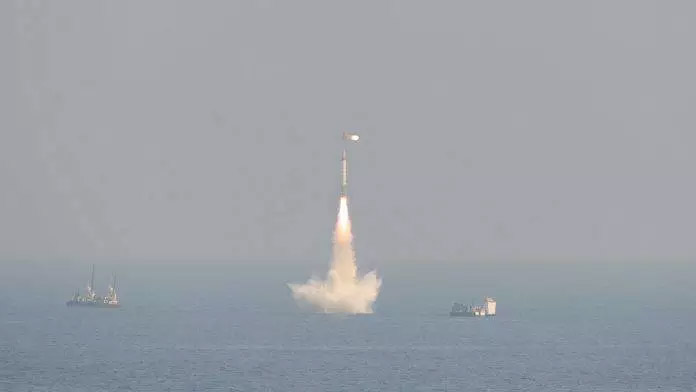India Test Fires K-4, Nuclear-Capable Submarine Launched Missile
Jan 19, 2020
K-4 is the most potent missile that India can fire from a submarine, giving the country unprecedented second-strike capability and huge deterrence power. A photo shows a missile launch from under the sea
New Delhi: After repeated delays, India successfully test fired the 3,500 km range K-4 nuclear-capable missile meant for the indigenous Arihant-class submarines.
The missile was tested Sunday from a fixed underwater pontoon on the east coast — sources told ThePrint it was fired off the coast of Andhra Pradesh.
This is the fourth time the Defence Research and Development Organisation (DRDO) has attempted to test fire the missile since October, but various climatic conditions prevented it.
The K-4 is the most potent missile in India’s inventory that can be fired from a submarine, giving the country unprecedented second-strike capability and a huge deterrence power.
While India does operate a submarine launched ballistic missile (SLBM), the K-15, it has a limited range of just about 750 km.
DRDO sources say that the research agency is already working on a much longer range missile, the K-5, which can hit targets 5,000 km away.
Nuclear Triad
India is among the six nations in the world to have the capability to fire a nuclear missile from land, air and undersea. The others are US, Russia, China, France and UK.
The induction of INS Arihant into the Navy in 2016 has been one of the biggest developments for the armed forces in the last decade. With this induction, India completed the nuclear triad.
Stressing on the importance of the deployment of INS Arihant, Prime Minister Narendra Modi had, in 2018, congratulated the crew and all those involved in the achieving the feat.
He had said this puts India among a handful of countries having the capability to design, construct and operate ballistic missile submarines, known as SSBNs.
The second submarine of the Arihant class, known as Arighat, was launched in 2017, and is said to be near induction.
Courtesy: theprint.in

